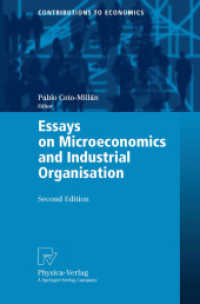Full Description
Bioengineered Nanomaterials for Wound Healing and Infection Control is a key reference for those working in the fields of materials science, pharmacy, nanotechnology, biomedical engineering and microbiology. Bioengineered nanomaterials have unique physicochemical properties which promote accelerated wound healing and treatment of infections. The biosynthesis of these nanomaterials also offers a clean, safe and renewable alternative to traditional nanomaterials, helping reduce environmental impact alongside antibacterial resistance.
Contents
1. An Overview of antimicrobial resistance and its mechanisms
2. An overview of wound healing: Wound types and current therapeutics
3. The role of biofilms and multidrug resistance (MDR) in wound infections
4. Wound healing and Nanotechnology: Opportunities and challenges
5. Nanotechnology-based therapeutics to combat biofilms and antibacterial resistance in chronic wound infections
6. Smart Nano-Systems for Wound Healing and Infection Control
7. Bioengineering of nanomaterials using biological resources: Biofabrication mechanisms, characterizations and biomedical applications
8. Bacteria-derived nanobiomaterials: Exploration of their wound healing, antimicrobial and biofilm inhibitory activities
9. Mycosynthesis of nanobiomaterials and their wound healing, antimicrobial and biofilm inhibitory activities
10. Bioengineering of nanomaterials using micro and macroalgae and their wound healing, antimicrobial and biofilm inhibitory activities
11. Phytonanotechnology: a greener approach for bioengineering of nanomaterials and their wound healing, antimicrobial and biofilm inhibitory activities
12. Bioengineered silver nanoparticles for antimicrobial therapeutics
13. Bioengineered gold nanoparticles for antimicrobial therapeutics
14. Green nanotechnology-based selenium and titanium dioxide nanomaterials for antimicrobial applications
15. Opportunities and challenges for bioengineered nanomaterials as future nanomedicine







